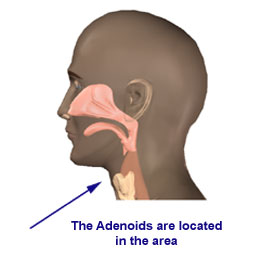Serous Otitis Media
Serous otitis media describes a collection of fluid in the middle ear. This may be acute (not lasting for a long time) or chronic (lasting for a long time).
Acute serous otitis media is usually the result of blockage of the eustachian tube from an upper respiratory infection or an attack of nasal allergy. In the presence of bacteria, this fluid may become infected, leading to an acute suppurative otitis media (infected or abscessed middle ear).
Chronic serous otitis media may result from long-standing eustachian tube blockage or from thickening of the fluid so that it cannot be absorbed or drained down the tube. This chronic condition is usually associated with hearing impairment. There may be recurrent ear pain, especially when the individual catches a cold. Fortunately, serous otitis media may persist for many years without producing permanent damage to the middle ear mechanism. The presence of fluid in the middle ear, however, makes it vulnerable to recurrent acute infections. These recurrent infections may result in middle ear damage.
Causes
Serous Otitis Media may result from any condition that interferes with the periodic opening and closing of the eustachian tube. The causes may be congenital (present at birth), may be due to infection or allergy, or may be due to blockage of the tube by adenoids:
The Immature Eustachian Tube – The size and shape of the eustachian tube is different in children than in adults. This accounts for the fact that serous otitis media is more common in very young children. Some children inherit small eustachian tubes from their parents; this accounts in part for the familial tendency to middle ear infection. As the child matures, the eustachian tube usually assumes a more adult shape.
Cleft Palate – Serous otitis media is more common in the child with a cleft palate. This is due to the fact that the muscles that move the palate also open the eustachian tube. These muscles are deficient or abnormal in the cleft palate child.
Infection – The lining membrane (mucous membrane) of the middle ear and eustachian tube is connected with, and is the same as, the membrane of the nose, sinuses and throat. Infection of these areas results in mucous membrane swelling, which in turn may result in eustachian tube blockage.

Adenoids – The adenoids are located in the nasopharynx, the area around and between the eustachian tube openings. When enlarged, the adenoids may block the eustachian tube opening.
Treatment of Acute Serous Otitis Media
Treatment of acute serous otitis media focuses on treatment of upper respiratory infection and allergy attacks. This may include antibiotics, antihistamines (anti-allergy drugs), decongestants (drugs to decrease mucous membrane swelling) and nasal sprays. If the fluid abscesses (collects), a myringotomy (incision of the eardrum membrane) may be necessary to relieve pressure and release the pus (fluid).
Treatment of Chronic Serous Otitis Media
As the acute upper respiratory infection subsides, it may leave the patient with a chronic sinus infection. Pus from the sinuses and nose drains over the eustachian tube openings in the nasopharynx, resulting in persistent eustachian tube blockage. Antibiotic treatment may be needed as a result.
General health factors are particularly important in regard to the child’s resistance to infection. A deficiency in some of the blood proteins may make a child more vulnerable to recurrent infections and prolonged colds. Periodic injections of gamma globulin may be required.
Allergy is often a major factor in the development or persistence of serous otitis media. Mild cases can be treated with antihistamine drugs. More persistent cases may require allergic evaluation and treatment, including injection treatment.
Your health care provider may recommend eustachian tube inflation, which is gentle blowing of air through the nose into the obstructed eustachian tube and middle ear to help relieve the congestion and reestablish middle ear ventilation. This must be done with great care, so as not to cause damage to the ears.
Surgical treatment of chronic serous otitis media may be recommended to reestablish ventilation of the middle ear, keep the hearing at a normal level, and prevent recurrent infection (which can damage the eardrum membrane and middle ear bones). Myringotomy (an incision in the eardrum membrane) is performed to remove middle ear fluid, which is drained with a ventilation tube. In rare cases, the drum membrane does not heal following dislodgment of the tube. The perforation may be repaired at a later date if this occurs. In adults, myringotomy and insertion of ventilation tube is usually performed in the office under local anesthesia. In children, general anesthesia is required. The adenoids are removed if enlarged.
More often than not, when the ventilation tube dislodges there is no further middle ear ventilation problem. Should serous otitis media recur, reinsertion of a tube may be necessary. In some difficult cases it is necessary to insert a more permanent type of tube. At times, a permanent hole in the eardrum develops when the tube is dislodged or removed. If this hole persists, it can be repaired at a later date when the eustachian tube blockage has subsided.
When a ventilation tube is in place the patient may carry on normal activities, with the exception that he must not allow water to enter the ear canal. Cotton with Vaseline or a custom-made ear mold will usually protect the ear from water.
For more information:
Go to the Ear, Nose, and Throat Disorders health topic.